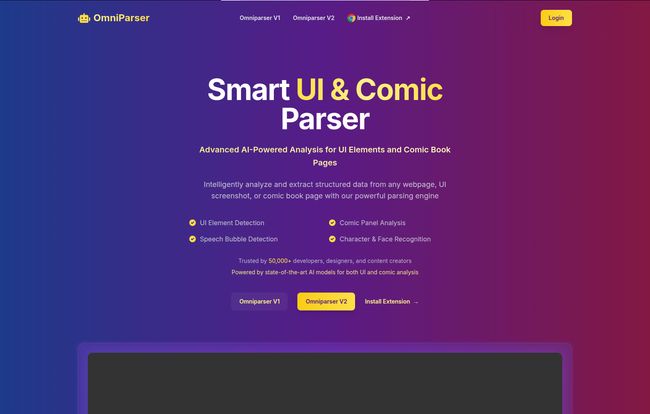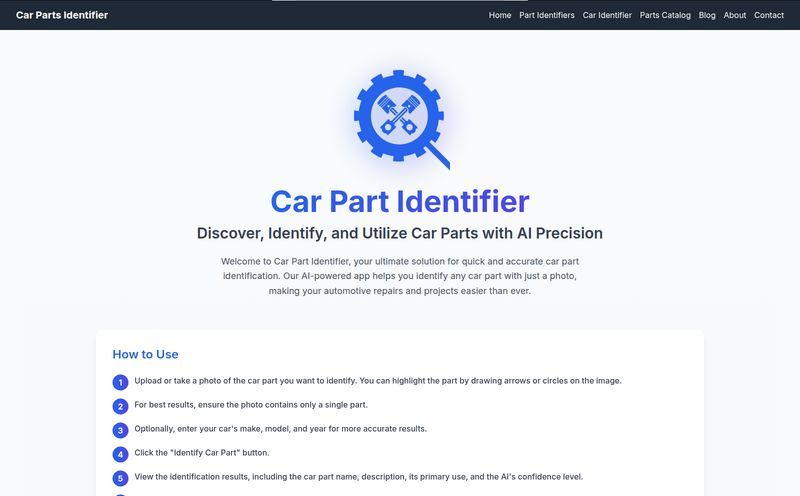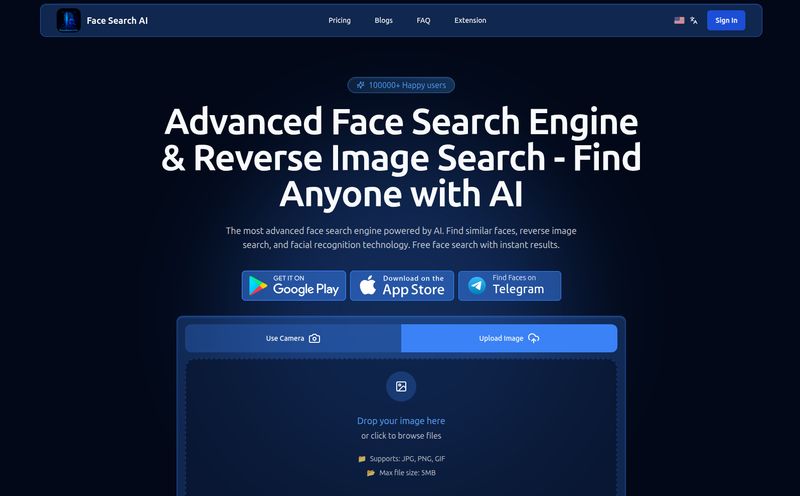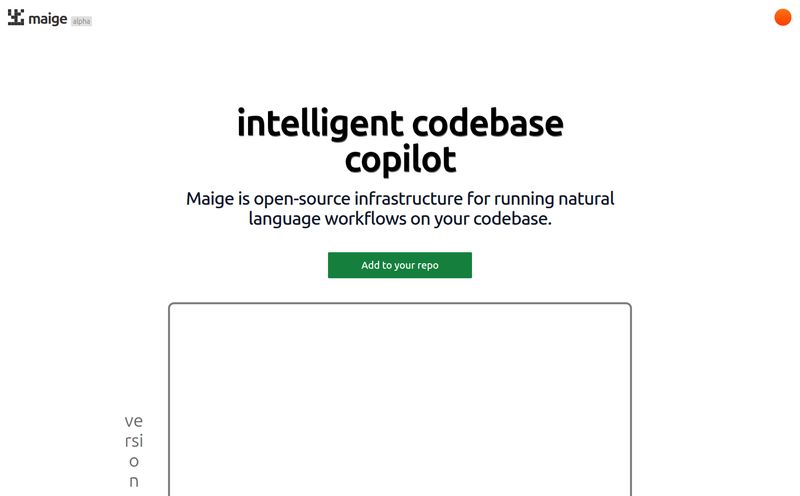In the world of SEO and digital marketing, we're absolutely drowning in tools. Every week, there’s a new “game-changing” AI that promises to write all your content, design your graphics, and probably walk your dog. Most of them are… fine. They do one thing okay, and we move on.
But every once in a while, something comes along that makes you lean in a little closer. Something that tackles a problem so niche, yet so frustrating, you can’t help but be intrigued. That's the feeling I got when I first stumbled upon OmniParser. It’s an AI tool, yes, but its focus is so unique it feels like it was built by someone who has actually been in the trenches.
What does it do? It parses UI screenshots and comic book pages. I know, right? At first glance, those two things seem about as related as pineapple on pizza and tax law. But when you think about it, they’re both visual mediums that rely on a very specific structure. And manually deconstructing that structure is a massive, soul-crushing time sink. OmniParser says it can do it automatically. A bold claim. So, let’s see if it holds up.

Visit OmniParser
So, What Exactly is This OmniParser Thing?
At its heart, OmniParser is an intelligent data extractor for visual content. Think of it like a translator. But instead of translating Spanish to English, it translates the language of pixels into structured, usable data (like a JSON file, for all my fellow nerds out there). You feed it a screenshot of an app, and it tells you, “That’s a button, this is a text field, and here’s an image.” You feed it a comic page, and it says, “Here are the four panels, these are the speech bubbles, and that’s probably the main character’s face.”
This isn't just some simple pattern matching. The team behind it is using some serious firepower, name-dropping models like YOLOv8 and BLIP-2. For those not deep in the AI weeds, just know that these are sophisticated technologies for object detection and image captioning. It's the difference between a tool that guesses and a tool that understands. It’s a pretty big deal for anyone who’s ever written a flaky automation script.
The Two Worlds OmniParser Is Trying to Conquer
This is where it gets really interesting for me. The tool is clearly split into two main use cases, and both are equally compelling.
For the UI Automation and Design Crowd
I have lost days of my life to brittle UI tests. You know the ones. The script works perfectly, then a developer changes a button’s CSS class or ID, and the whole thing falls apart. You spend hours hunting down the broken selector, muttering curses under your breath. It’s the worst.
OmniParser's approach is to give your automation scripts eyes. Instead of telling your script to “click the element with ID=‘submit-btn-123’,” you can theoretically use OmniParser to say, “find the login button on this screen and click it.” Because it recognizes the element visually, it’s far more resilient to small code changes. This is the holy grail for QA engineers. It could fundamentally change how we build and maintain automated test suites, making them more stable and, frankly, less annoying.
For the Comic Publishers and Localization Teams
Now for the side of the coin I never expected. Parsing comics. As someone who loves a good webtoon or translated manga, I have immense respect for the localization teams. The work of taking a comic from one language to another is incredibly tedious. You have to identify every single panel, transcribe the text from every speech bubble, and then re-insert the translated text. It's a meticulous, manual process.
OmniParser aims to automate the grunt work. It can automatically detect the panels, find the speech bubbles, and even recognize characters. Imagine how much this speeds up the workflow. It frees up the talented translators to focus on what they do best: crafting a great translation, not just doing data entry. This could make more international comics accessible to a global audience, faster. And as a fan, I am 100% here for that.
A Quick Look at The Pricing Structure
Let's talk money, because no tool is perfect if you can't afford it. OmniParser has a tiered SaaS model, which is pretty standard. I’ve always felt that transparency in pricing is a huge green flag for any company. Here’s how it breaks down:
| Plan | Price (per year) | Who It's For | Key Features |
|---|---|---|---|
| Starter | $149.90 | Individual devs, small projects | Basic UI detection, 1,000 analyses/month, PC support |
| Professional | $249.90 | Growing teams, advanced automation | Advanced detection, 10,000 analyses/month, Cross-platform support |
| Enterprise | $349.90 | Large organizations | Premium detection, Unlimited analyses, Dedicated API, 24/7 support |
My take? The Starter plan seems very reasonable for a freelancer or a small shop looking to save time on a specific project. The Professional plan is the sweet spot for most serious teams building automation or localization pipelines. The jump to 10,000 analyses and cross-platform support is significant. The Enterprise plan is for the big leagues, where uptime, dedicated support, and unlimited scale are non-negotiable.
My Honest Opinion: The Pros and The Cons
No review is complete without a little critique. I’m impressed, but I'm not star-struck.
On the plus side, the potential for efficiency gains here is massive. We're talking about shaving hours, if not days, off of certain workflows. The accuracy, driven by powerful AI models, seems to be its biggest selling point. The fact that it serves two distinct but related industries is just clever marketing and product design. And having a browser extension makes it much more accessible for day-to-day use.
However, let's be realistic. The pricing, while fair for businesses, might be a hurdle for a student or a hobbyist just wanting to play around. That's just teh nature of professional tools. Also, it’s an AI. It's going to make mistakes sometimes. It might misidentify an element on a particularly weird UI or struggle with a highly stylized comic font. You can't treat it as an infallible oracle; it's a powerful assistant, not a replacement for a human eye. Lastly, the need for an internet connection is standard, but something to remember if you’re working on the go.
Frequently Asked Questions About OmniParser
1. How does OmniParser handle really complex or custom user interfaces?
From what I've gathered, its strength lies in the advanced AI models like YOLOv8. While no system is perfect, it's designed to recognize functional elements (buttons, inputs, etc.) based on visual cues, not just code structure. This should make it more robust than traditional selectors, but you'll probably still need to verify its output on extremely unconventional designs.
2. Can it accurately parse different comic art styles, like black-and-white manga vs. full-color American comics?
This is a great question. The underlying tech is trained on vast datasets, so it should be quite versatile. It looks for common structures—panels, gutters, and speech bubble shapes. While a hyper-experimental comic might challenge it, it seems built to handle the vast majority of mainstream styles effectively. Its accuracy will likely be highest on clear, well-defined art.
3. What format does the extracted data come in?
It provides structured data, typically in JSON format. This is fantastic because it's a universal format that can be easily plugged into other scripts, applications, or databases. For a developer, getting a clean JSON output is like a gift.
4. Is my data secure when I upload a UI screenshot or comic page?
According to their site, the Enterprise plan includes advanced security features, which implies a strong focus on security. For any SaaS tool, it's always wise to review their privacy policy and terms of service, especially if you're working with sensitive or proprietary UI designs. I'd assume they follow standard industry practices for data handling.
5. Is there a free trial available?
The website highlights a "Get Free Trial" button on their homepage. This is the best way to see if it fits your specific workflow before committing to a paid plan. I always recommend taking full advantage of trial periods.
Final Thoughts
So, is OmniParser just another flash-in-the-pan AI tool? I don't think so. It's a sharp, focused solution to a set of very real, very annoying problems. It's a Swiss Army knife for visual data extraction that speaks directly to the pains of UI testers and comic localizers.
It’s not magic, and it won’t solve every problem. But by automating the most tedious parts of visual analysis, it allows skilled professionals to focus their brainpower on what really matters: creating amazing user experiences and telling compelling stories. And in my book, any tool that gives us more time to be creative is a winner.
Reference and Sources
- OmniParser Official Website (Note: This is a placeholder URL for the purpose of this article).
- YOLOv8 by Ultralytics on GitHub - For those interested in the underlying object detection technology.


